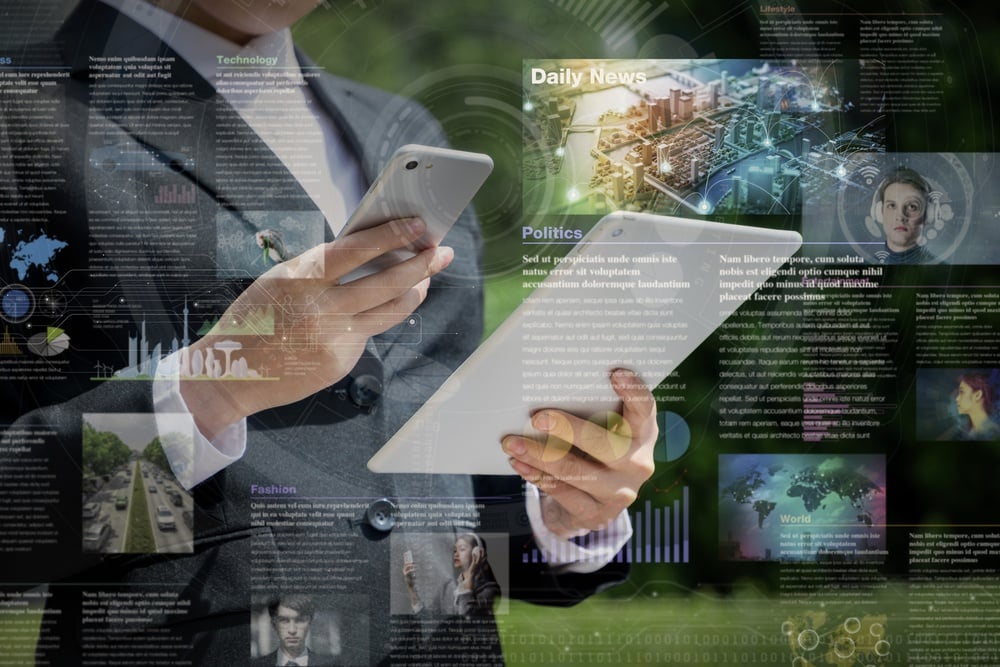Published by HR.COM
David Keane, CEO and co-founder from Bigtincan explores the power of content intelligence in enabling organizations to optimize the performance of their mobile workforce.
It wasn’t so long ago that “mobile workforce” referred almost exclusively to sales teams and field workers. Now, with the advent of the cloud, more employees from all areas of business are able to work remotely, reshaping the core business needs of the mobile workforce. According to International Data Corporation (IDC), the U.S. mobile worker population will increase from 96.2 million in 2015 to 105.4 million mobile workers in 2020 (Source: IDC)*. What’s more, 50 percent of those workers in 2020 will be from the millennial generation (Source: U.S. Bureau of Labor Statistics). If those predictions remain true, nearly three-quarters of the U.S. workforce will be mobile and half comprised of the mobile generation.
In addition to the multitude of challenges this presents from an IT perspective, the biggest challenge it poses to HR professionals, managers and operational leaders is monitoring employee performance when workers are no longer physically in the same space as their managers.
While managers are still able to gather performance metrics of employees, they lose a level of one-on-one interaction that is vital to gaining, not only a true understanding of employee success, but the ability to predict future employee behavior. Are they challenged by the work that they do, or are they disgruntled? Do they deserve a promotion, or are they coasting along?
For the employee, rapid advances in technology offer new ways to improve job performance. With new enablement apps and solutions, they can quickly access the most recent, relevant content available to help improve work flow. This is great for the employee, who has all the mobile tools at hand to succeed, but how do they convey their work effort back to management?
The solution lies within the same technology that enables the employee to work remotely and, for the first time, employers can get an understanding of the work behavior of remote employees and how those behaviors can be used as a predictor of future success.
It’s made possible with content intelligence.
Predicting the future
By mapping out how an individual employee utilizes information – what content he or she accesses; how often, when and where certain materials make the biggest impact and what is most frequently shared and collaborated upon with their colleagues–companies can build a history of actions to benchmark performance. If an employee begins to access or share content less, this could be an indication that the user is unsatisfied or unmotivated in their job, or simply that the content available is no longer as effective as it once was.
When it comes to sales, the likelihood of a sales employee making quota in the future can be estimated by their consumption and use of specific content– if they’re actively sourcing, editing and utilizing content, managers can see that there’s a high level of effort on the part of the employee to succeed.
This new approach to the value of content interactions presents a real opportunity to help underperformers, as well. By sharing the behavior of leaders and top performers within an organization, other employees are able to see what tools and actions offer the best chance of success. This approach also gives HR executives and managers vital insights into the overall operational success of teams.
Adding Value through HR systems integration
Today’s cloud-based HR systems provide tremendous value to organizations trying to improve how they manage their employees, from ensuring that, not only are the proper legal and operational processes in place, but that staff get paid on time, as well. The next generation of these systems is working towards intelligent analysis that help employers to identify and hire the right people, manage the career prospects of their current workforce and proactively identify individuals at risk of leaving the business.
However, most of these systems are limited to the kinds of basic data available from traditional back end operations, meaning that they lack vital content and analysis capabilities that would offer insight into how people in the organization actually work, and what they need to succeed. The ability to take content-centric employee behaviors and integrate them with HR data is an essential tool as managers of remote employees seek to identify and maximize the productivity of mobile workers.
The Future
Nothing will stop the continued march of the mobile device in business, or the unstoppable desire of workers to operate from their devices, wherever they may be, without losing functionality or jeopardizing productivity. Employers will also begin to see the value of the mobile employee as it pertains to the bottom line. As the 2015 State of the Market Report on Enterprise Mobility finds, productivity loss due to an enterprise mobility deployment gap can cost businesses roughly $12,493 per knowledge worker, $9,283 per information worker and $2,993 per service worker (Source: Webtorials).
The market will respond in kind, and HR teams can expect to see an increase in vendors offering solutions that integrate and maximize the power of content intelligence with cloud-based HR systems.
The good news is that these systems are already here and it’s easy to get started. Employees are already leveraging technology to improve job performance and outcomes, gaining instant access to content when they need it the most. These systems are building historical data that not only tells internal marketing and sales teams what’s the most effective, but also gives HR teams deep insights into employee behavior and performance beyond sales quotas. Ready to get on board? Look for solutions that pull content intelligence into existing HR systems and prepare for results that will forever change the way you think about employee productivity. S&P
*Source: IDC, U.S. Mobile Worker Forecast, 2015-2020 (Doc #256194), June 2015 - See more at: https://www.hr.com/en/magazines/hr_strategy/march_2016_hr_strategy_planning/out-of-sight-out-of-mind-how-content-intelligence-_im330uqu.html

